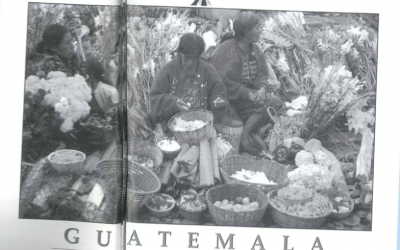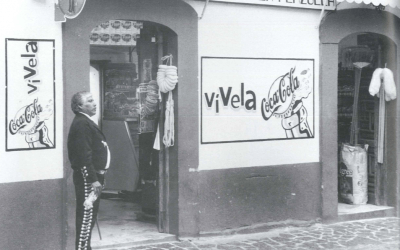Sex Tourism in Latin America
Sex tourism—travel to engage in sex for money—shares a lengthy and sometimes colorful history with that of adventure travel and tourism in general. Literature investigating early travel involving sexual encounters includes stories dating to explorations by Columbus in the 15th century. Considerable research supports the theory that, along with potatoes, tobacco, and other commodities, Columbus and his crew also brought the first cases of syphilis to the New World. Among other early journeys abroad that were enhanced by sexual revelries were the “Grand Tours,” trips taken across Europe by young aristocratic men and women during the during the 18th and 19th centuries in order to broaden their understanding of culture and the arts. These adventurous young people often supplemented their cultural experience with that of a sexual nature through liaisons with people they met while traveling.
When travel opportunities opened up to a growing segment of the middle class in the mid-19th century, including that of the United States, sex tourism evolved into a common activity. As many European countries became wealthier, clients expanded their search for sex into other regions, such as the Caribbean and northern Africa, where prices for sex were more moderate. The growth of sex tourism has also had a strong correlation with military conquest and the presence of foreign military bases. Prostitution proliferated near British military bases worldwide during the latter part of the 18th century and emerged more recently near US military bases in Korea, the Philippines, Thailand, and Vietnam, establishing these areas as preferred destinations for sex. In the 1940s and 1950s, Cuba was the destination of large numbers of American male sex tourists. Prostitution became illegal after the revolution but started to flourish again in the 1990s, when economic conditions forced Castro to reopen the tourism industry.
The expansion of sex tourism has continued unabated, in part as a result of the promotion of tourism as a development strategy, particularly in the developing world, where poverty forces people into sex work. Resource-scarce regions, including many Latin American countries, where tourism has experienced considerable support from the government, have proven to be fertile areas for the growth of sex tourism. Until the tragic events of September 11, tourism had been increasing steadily worldwide, with Latin American countries among those enjoying rising figures. The World Tourism Organization (WTO) reports that the total number of visitors to Latin America and the Caribbean grew by 6.1 percent last year to 57.6 million. Research indicates that as countries such as Guatemala, El Salvador, Costa Rica, and Nicaragua have increased efforts to promote tourism on a wide scale, sex tourism has risen proportionately.
Today, sex tourism is a multibillion dollar industry that supports an international workforce estimated to number in the millions. Because prostitution is illegal in most countries, exact statistics about sex workers, their international clients, and the money generated within the industry itself are unavailable. Employees benefiting from the sex tourism industry include female and male sex workers as well as—directly or indirectly—members of the entire travel and tourism sectors, from taxi drivers to airline, hotel, and restaurant employees. Sex tourism most commonly involves female prostitution, but, most disturbingly, increasingly involves the sexual exploitation of children, which is outlawed universally. Whether sex tourism among consenting adults is a “victimless crime” remains a point of contention. Excluding some “escorts” working for elite agencies and high wages, sex workers almost always suffer from poverty, marginalization, violence, disease, and sexual and substance abuse.
Sex tourism is increasing worldwide, but particularly in Latin American, especially in Central America. In part, the shift in destinations can be attributed to the crackdown in Asia by organizations such as the WTO, End Child Prostitution, Child Pornography and Trafficking of Children for Sexual Purposes (ECPAT), and the United Nations. Sex tourism—especially that involving exploitation of children—sought areas where laws are less restrictive and government surveillance less diligent.
Brazil has long been thought of as the region’s leader in sex tourism, but recent evidence highlights emerging business in Costa Rica, Guatemala, and Honduras. Julia O’Connell Davidson, one of the most knowledgeable experts on the subject of sex tourism, cites a 1994 study estimating that more than 30,000 Americans and several thousand more Canadians had retired to Costa Rica. Many of the single men among them were described as “sex-pats,” expatriates who retired there not just for the climate, tax breaks, and other advantages but also for the “easy and cheap sexual access to their preferred sexual objects.” “What we are seeing is the dark side of tourism,” said Heimo Laakkonen, head of UNICEF in Costa Rica, where tourism is the most profitable industry in the country.
While views of sex-for-sale between consenting adults vary considerably, the arena of child sex tourism is disturbing to all. ECPAT estimates that more than one million children worldwide enter the sex trade annually, many of them from Latin American countries. The organization estimated, for example, that in 1994, 500,000 children in Brazil were involved in the sex industry, and more recently, the Colombian Ministry of Justice reported at least 25,000 child prostitutes in that country. The UN Human Rights Committee recently expressed concern over the “high incidence of commercial sexual exploitation of children in Costa Rica related to tourism”. Casa Alianza, a non-profit advocacy group for street children in Mexico and Central America, estimates that some 5,000 street children in Honduras are involved in sex tourism. Similar problems exist in Paraguay, the Dominican Republic, and Venezuela.
The reasons for the growth in the child sex tourism trade in Latin America and elsewhere are numerous and often mirror those in the adult sex tourism industry. According to the Preda Foundation, prostitution among the estimated 40 million street children in Latin America has long been a consequence of the region’s poverty. A recent study of 300 street children by Nicaragua’s Family Ministry revealed that more than 80 percent of them had started working as prostitutes that year to support themselves and to buy drugs. Typically, many thousands of these children have fled abusive homes.
The increase in the child sex trade is also commonly attributed to the mistaken impression that younger sex workers are less likely to be infected with sexually transmitted diseases such as HIV or AIDS, although figures often dispute this belief.
Another possible reason for the rise in child sex tourism is that clients often feel less inhibited outside the constraints of their home countries and may be attracted by what they feel to be less restrictive social taboos in other countries. Like their adult counterparts, child sex workers are also frequently lured into the trade by advertisements for lucrative jobs, travel, and an exciting lifestyle. One of the greatest boosts to sex tourism overall has been the availability of information on the Internet related to the sex industry. Some Web sites are accessible to the general public, while others, such as the World Sex Archives Web page, require membership and dues to access their database of photos and bulletin boards of messages from other sex tourists. Child pornography and prostitution of any kind are illegal on the Internet, and international efforts to shut down related Web sites have been reasonably successful. However, lawmakers have been unable to agree on whether and how to prohibit the advertisement of adult sex tours, especially since prostitution is legal in many countries, such as Costa Rica.
Since the 1990s, ECPAT and other members of the nongovernmental, governmental, and private sectors worldwide have been collaborating to raise awareness about sex tourism and to take steps toward eradicating child sex tourism. These groups have initiated campaigns that include the use of luggage tags, ticket pouches, and educational brochures, along with the development of courses in tourism training schools and in-flight videos. In 1997, Brazil launched a “No Child Sex Tourism” campaign, since adopted by the WTO, to curtail sex tourism and enforce laws imposing jail sentences on foreigners caught purchasing sex from children. In January 2000, Mexico enacted an amendment of the federal penal code and code procedures that declared sex tourism to be a punishable crime.
Latin American countries share with others in the international community the enormous and complex challenges posed by the growing sex tourism industry. Even if they are united in their determination to eliminate all forms of exploitation of children, countries nevertheless need to agree on more effective and expedient means of regulating the entire sex tourism industry. Sex tourism among adults remains a complex topic involving issues of privacy, consent, religious and ethical beliefs, and human rights. Only through international cooperation can the sex tourism industry be regulated successfully and millions of children be protected against exploitation.
Winter 2002, Volume I, Number 2
Ann Barger Hannum, project manager and consultant, has been affiliated with Harvard for the past ten years, most recently at the Harvard AIDS Institute. The author thanks Julia M. Green, project associate for the Community Research Initiative of New England, for her collaboration with this article.
Related Articles
Tourism’s Landscape of Knowledge
Tourism research and scholarship is a fairly new interdisciplinary field, and I hope to offer an abbreviated pastiche of this expanding field of knowledge, culled from my own experience….
Tourism and the Archaeology of State – Facing Challenges: the Case of Copan, Honduras
For many nation-states, the achievements of their illustrious ancestors are the source of immense pride, and a focus for national identity. …
Nine Quandaries of Tourism
International tourism presents itself as straightforward, passive and benign, yet it is complex, interesting and important, full of contradictions and depths. Tourism is the world’s largest export …




